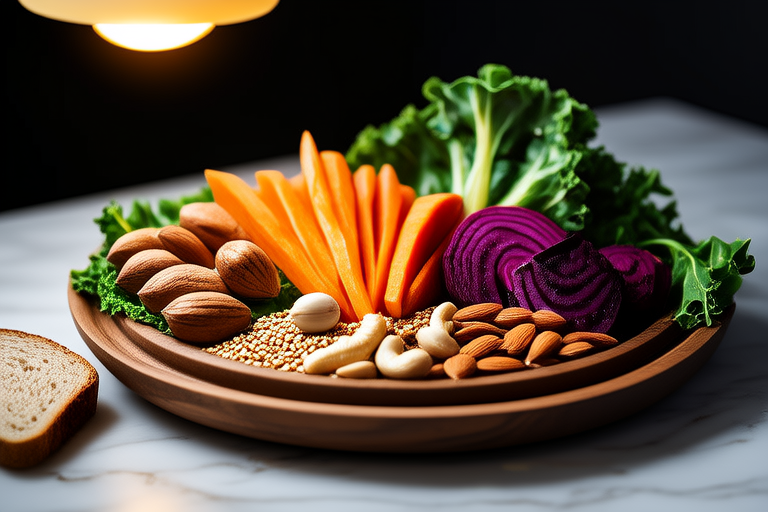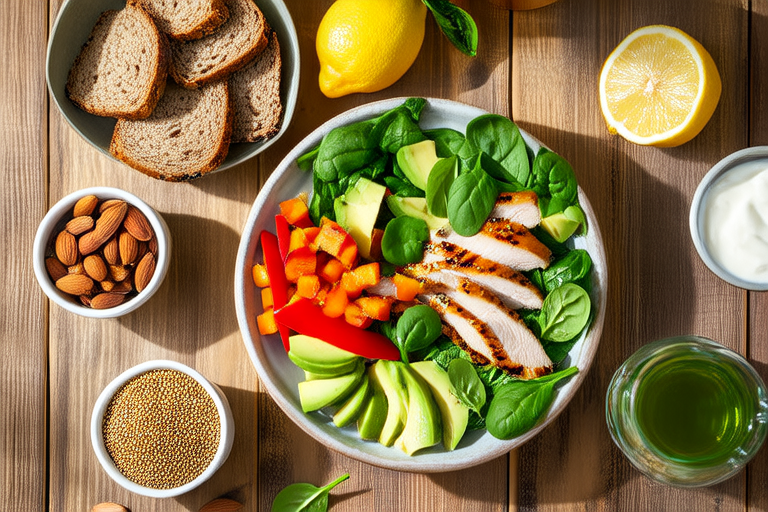Your Guide to a Healthy Diet: Simple Guidelines for Optimal Nutrition
Introduction
A healthy diet is fundamental to maintaining overall well-being. It’s not just about weight loss; it’s about providing your body with the nutrients it needs to function optimally. A balanced diet can enhance energy levels, improve mood, support immune function, and reduce the risk of chronic diseases such as heart disease, diabetes, and certain cancers.
The foods you choose can influence how you feel today, tomorrow, and in the future. Eating a variety of nutrient-dense foods supports your body’s ability to repair tissues, build muscles, and maintain a strong immune system. Additionally, a healthy diet can improve mental health, helping to manage stress and anxiety. By making informed choices about what you eat, you can enjoy better health and a higher quality of life.
Key Nutrients
Proteins
Proteins are the building blocks of life. They are essential for growth, repair, and maintenance of tissues. Proteins also play a crucial role in the production of enzymes and hormones, which regulate many bodily functions. Good sources of protein include lean meats, fish, poultry, eggs, dairy products, beans, lentils, nuts, and seeds.
Fats
Fats are important for brain development, hormone production, and energy storage. However, not all fats are created equal. Unsaturated fats, found in avocados, nuts, seeds, and olive oil, are beneficial for heart health. Saturated fats, found in animal products, and trans fats, often found in processed foods, should be consumed in moderation due to their potential to increase cholesterol levels.
Carbohydrates
Carbohydrates are the primary source of energy for the body. They are broken down into glucose, which fuels our cells. Complex carbohydrates, such as whole grains, vegetables, and legumes, provide sustained energy and are rich in fiber. Simple carbohydrates, found in sugary foods and beverages, offer quick energy but can lead to rapid spikes and drops in blood sugar levels.
Vitamins and Minerals
Vitamins and minerals are essential for various physiological processes. Vitamins, such as vitamin C and E, act as antioxidants, protecting cells from damage. Minerals like calcium and magnesium support bone health. Iron is vital for oxygen transport in the blood. Eating a variety of fruits, vegetables, whole grains, and lean proteins ensures that you get a wide range of these essential micronutrients.
Balanced Meal Planning
Tips for Creating Balanced Meals
Creating balanced meals involves incorporating a mix of macronutrients and micronutrients. Start with a base of complex carbohydrates, add a source of lean protein, and include healthy fats and plenty of vegetables. For example, a meal might consist of quinoa, grilled chicken, avocado, and steamed broccoli. This combination provides a balanced intake of carbohydrates, proteins, fats, and fiber.
Portion Control
Portion control is key to managing calorie intake and maintaining a healthy weight. Use smaller plates and bowls to help control portions. Pay attention to hunger and fullness cues, eating until satisfied rather than stuffed. Consider using measuring cups or a food scale to accurately measure portion sizes, especially when starting out.
The Benefits of Variety
Eating a variety of foods ensures that you get a broad spectrum of nutrients. Different foods offer unique combinations of vitamins, minerals, and other bioactive compounds. Incorporating a wide array of colors and textures into your meals can also make eating more enjoyable. Try experimenting with different cuisines or seasonal produce to keep your diet interesting and nutritious.
Conclusion
In summary, a healthy diet is integral to achieving and maintaining optimal health. Understanding the roles of key nutrients, planning balanced meals, controlling portions, and enjoying a variety of foods are essential steps toward this goal. By making small, sustainable changes to your eating habits, you can improve your overall well-being and reduce the risk of developing chronic diseases.
Remember, consistency is key. It’s not about perfection but about making gradual improvements over time. Start by incorporating one new healthy habit each week, whether it’s adding a salad to your lunch, swapping out refined grains for whole grains, or trying a new vegetable. With patience and persistence, you can create a lifestyle that supports your long-term health and happiness.










